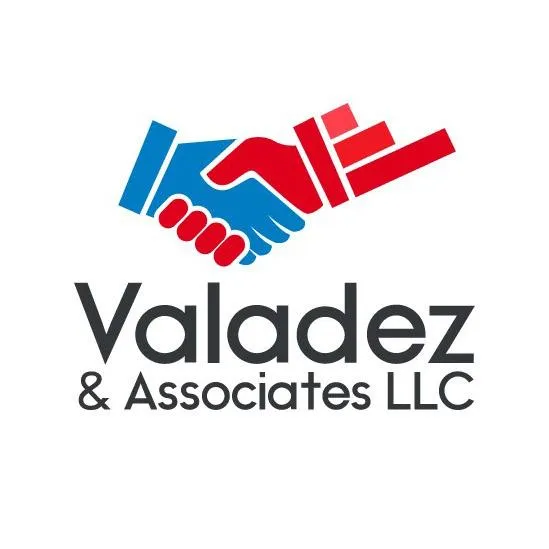Valadez & Associates Blog
Thought leadership, policy updates & firm news—your go-to source for expert insights.

Unlocking Hidden Potential: Affordable Ways to Supercharge Employee Productivity
Introduction
In today’s relentless and competitive market, every business—regardless of its size—strives to enhance productivity while keeping costs under control. This is especially critical for small and medium-sized enterprises (SMEs) navigating the challenges of growth. One of the most effective strategies for boosting productivity without blowing the budget is through low-cost professional development. Companies that foster continuous learning not only empower employees but also achieve long-term profitability and operational excellence.
Why is this important? Research shows that businesses embracing a learning culture retain employees longer, deliver better customer service, and position themselves for sustainable growth. This blog explores practical strategies for embedding learning within your organization, with a focus on leveraging local and cost-effective resources.
The Link Between Training, Productivity, and Employee Retention

There is a well-documented connection between employee training and productivity. Effective training not only fills skill gaps but also boosts employee motivation and confidence, directly contributing to higher performance. Some sources estimate that companies with comprehensive training programs achieve productivity boosts of up to 17%, though it’s important to note that the origin of this statistic may vary between studies【58】【60】.
Consider local efforts like Arizona State University’s professional certification programs, which allow businesses to upskill employees affordably. These types of initiatives demonstrate how regional partnerships can help companies manage training costs while fostering workforce growth. Beyond technical skills, investments in leadership and interpersonal development also pay off by enhancing employee engagement and retention.
Leadership expert John C. Maxwell encapsulates the importance of training succinctly: “The only thing worse than training your employees and having them leave is not training them and having them stay.” This quote highlights the risks businesses face when they neglect employee development—unmotivated employees can stagnate business growth and erode team morale【16】【18】.
But the benefits extend beyond productivity alone. A Gallup study found that 45% of employees are more likely to stay with a company that offers growth opportunities【8】【9】. Training programs reduce turnover by giving employees a sense of purpose and career progression. This is especially important for businesses aiming to retain high-performing talent, particularly in industries with competitive labor markets.
Moreover, affordable peer-to-peer learning models, such as internal mentorship programs, offer businesses a way to develop talent without incurring significant external training expenses. While specific case studies from Scottsdale are limited, Arizona’s broader startup ecosystem—particularly in technology and service industries—has widely embraced these mentorship systems as part of their employee development strategies【9】【10】. Such programs not only reduce costs but also foster collaboration, knowledge-sharing, and innovation, key drivers for sustaining employee engagement and long-term business growth. According to Thinkific, peer-led initiatives help organizations build a culture of learning, where employees feel empowered to grow while contributing to the success of their teams【9】.
Implementing Budget-Friendly Development

At this point, you’re probably thinking, "Yes, I get that employee training is valuable, but it seems expensive and out of reach for my business." I understand this concern—many entrepreneurs and small business owners feel that robust training programs are only feasible for large companies with deep pockets. However, the truth is that effective, budget-conscious solutions are more accessible than you might think, especially if you take advantage of regional resources tailored to local business needs.
A great starting point is leveraging Pima County and Maricopa County's One-Stop Centers. Through ARIZONA@WORK, these centers offer invaluable services such as employee training, workforce development, and business recruitment support—often at no cost to employers. These services are designed to align with your business goals, helping you build a talented workforce without the financial burden of external trainers【29】【31】.
Making the Most of Local Workforce Resources
Pima County One-Stop Career Centers in Tucson provide customized workshops, apprenticeships, and on-the-job training opportunities that fit the needs of small and medium-sized businesses. These programs not only allow you to develop specific skill sets but also give you access to recruitment events to find job-ready candidates【29】【32】.
Maricopa County’s East and West Valley Career Centers offer similar support, helping businesses tap into workforce programs funded by the Workforce Innovation and Opportunity Act (WIOA). WIOA programs prioritize skills development for high-demand industries, giving businesses a competitive edge in the market while maintaining low operational costs【30】【32】.
Maximizing Value Through Collaboration
By partnering with these one-stop centers, you can access additional resources like labor market insights, recruitment support, and even direct connections to internship and apprenticeship pipelines. Participating in career fairs hosted by ARIZONA@WORK centers is another cost-effective way to source qualified talent without investing heavily in external recruitment agencies.
Moreover, these programs help future-proof your workforce by aligning training with emerging industry trends. Whether you need customer service workshops, technical skills training, or leadership development, these centers offer a range of solutions tailored to meet your company’s growth objectives.
With these accessible resources in place, there’s no need to delay your employee development plans due to budget concerns. Many successful companies in Arizona have already embraced this approach, using a combination of microlearning workshops, mentorship programs, and WIOA-funded training initiatives to create a high-performing workforce without breaking the bank【29】【30】【32】.
How to Implement with Practical Steps

Step 1: Identifying Employee Training Needs
The first step to effective training is conducting a needs analysis. Use tools like Google Forms to gather employee feedback and identify skill gaps. Align these insights with your company’s strategic objectives. For example, if customer service is a priority, prioritize training modules that address those skills.
ARIZONA@WORK centers in Pima County and Maricopa County provide free job readiness assessments and workforce planning support to help businesses identify employee development needs efficiently. These one-stop centers specialize in customized workforce strategies that align with business goals. You can access industry-specific data, receive help pinpointing in-demand skills, and even develop tailored career pathways for your team【29】【30】【31】.
Step 2: Choosing Cost-Effective Training Formats
Once needs are identified, select training formats that are both flexible and affordable. Options include:
Online learning platforms: Leverage digital courses that allow employees to learn at their own pace.
In-house training programs: Use internal expertise to conduct workshops or practical sessions.
Peer mentorship programs: Experienced employees can mentor new hires, sharing knowledge while strengthening team collaboration.
Collaborate with Maricopa Community Colleges to access low-cost courses and certifications tailored to your industry. Additionally, explore microlearning formats—short, interactive lessons delivered through videos or quizzes—which allow employees to absorb new concepts without disrupting daily workflows【30】【32】.
The ARIZONA@WORK centers offer additional value here by connecting businesses with apprenticeships, internships, and on-the-job training opportunities through WIOA-funded programs. These initiatives help employers fill critical skill gaps while keeping training expenses under control【31】【32】.
Step 3: Evaluating and Improving Results
After training is completed, evaluate performance to measure knowledge retention and identify areas for improvement. Combine employee feedback with performance metrics to gauge the effectiveness of each program. Use quarterly feedback loops to adjust your strategy as needed.
Both Pima County and Maricopa County ARIZONA@WORK centers offer follow-up assessments to track how well the training impacts your business outcomes. These assessments help refine your development plans over time, ensuring your programs remain aligned with evolving business needs【29】【30】【31】.
The Benefits and Challenges of Employee Development
Investing in employee development creates a win-win scenario for businesses, employees, and customers. Companies with well-trained employees experience higher productivity, as skilled workers perform tasks more efficiently, make fewer mistakes, and adapt to new challenges with greater ease. A capable workforce also strengthens innovation, enabling businesses to stay competitive in evolving markets.
For employees, professional development brings not only new skills but also increased job satisfaction. When employees feel supported in their growth, they become more engaged and aligned with company goals. This sense of purpose helps foster stronger teamwork and promotes a positive workplace culture, enhancing both individual performance and team dynamics.
Customers also benefit when businesses prioritize employee training. Employees who are confident in their skills provide more consistent and high-quality service, improving customer satisfaction and loyalty. Satisfied customers often translate into repeat business, reinforcing the company’s success over the long term.
Addressing Challenges Through Thoughtful Planning
Implementing training programs, however, can present challenges—particularly the risk of short-term productivity dips as employees focus on learning new skills. These disruptions can be mitigated by scheduling training sessions during off-peak hours or using microlearning strategies, which break lessons into smaller, more manageable segments that fit seamlessly into the workday【9】【30】.
Employers in Pima and Maricopa Counties can further ease the process by utilizing the services provided by ARIZONA@WORK centers. These one-stop centers help businesses create customized training plans, offer recruitment support, and provide on-the-job learning opportunities. Workforce programs funded by the Workforce Innovation and Opportunity Act (WIOA) also enable companies to access apprenticeships and specialized training aligned with their industry needs—often with minimal disruption to operations【29】【31】【32】.
By taking a thoughtful approach to planning and leveraging community resources, businesses can implement development programs effectively. This ensures that employee growth initiatives not only enhance workforce capabilities but also keep the organization running smoothly.
Conclusion
Effective, affordable training programs are a powerful way to unlock employee potential, enhance productivity, and build a sustainable business. The evidence is clear: investing in your employees drives growth and retention. Don’t miss out—explore partnerships with local workforce centers and educational institutions to kick-start your professional development initiatives today.
Take action now! Contact your nearest workforce center or sign up for a consultation to explore professional development strategies tailored to your team’s needs. Invest in your team today—unlock their potential, and watch your business thrive!
Additional Resources
ARIZONA@WORK Pima County One-Stop Career Centers
Pima County Employment & Job TrainingARIZONA@WORK Maricopa County Workforce Development Services
Maricopa County Workforce DevelopmentARIZONA@WORK Overview and WIOA Programs
ARIZONA@WORKArizona State University’s Professional Certification Programs
Devlin PeckProductivity Boost from Training (ASTD Study)
SchooxRetention Impact of Training Programs (Gallup Study)
Devlin PeckJohn C. Maxwell’s Quote on Training
Addicted2SuccessMicrolearning Strategies and Business Success Stories
ThinkificMentorship Programs and Scottsdale Tech Companies’ Success
ThinkificBooks on Leadership and Growth:
Drive by Daniel Pink
The 15 Invaluable Laws of Growth by John C. Maxwell
Mailing Address:
PO Box 31
Sahuarita, AZ 85629
(520)900-0178
Phoenix Office Address:
2801 E Camelback Rd, Suite 200
Phoenix, AZ 85016

© Copyright 2025. Valadez & Associates LLC.
All Rights Reserved.

